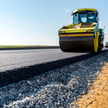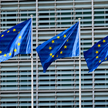For several years now, the UN Environment has been trying to calculate the emissions gap – the difference between the level of emissions that countries have committed themselves to achieve under international commitments and the level necessary to stop the temperature rise under the Paris Agreement.
The IPCC points to the scale of the challenge: to reach the 1.5°C target, global emissions must fall by 45% by 2030 compared to 2010. By 2050, we should enter a carbon-neutral state where any remaining greenhouse gas emissions are offset by action to remove them from the atmosphere.
New, better economy
Fortunately, in this transformation process, we can draw on extensive literature describing activities that serve people and the environment. It is becoming increasingly clear that they are not only a great business opportunity, but also an opportunity to improve our quality of life.
Investments in the thermal upgrading of buildings will reduce their energy needs and help combat energy poverty. Developing public transport will reduce smog levels and help solve the problem of traffic exclusion outside big cities. Renewable energy sources will reduce the demand for fossil fuel imports, and in the Global South they have already increased the access of local communities to cheap and clean energy.
One of the tools used to build a low-carbon economy of the future is the creation of a closed-loop economy. This idea, in which we treat waste from one production process as a raw material for another, showcases all the benefits of taking care of the environment.
It supports increasing the innovativeness of the economy and allows to reduce the demand for import of raw materials. By contributing to the reduction of greenhouse gas emissions, it helps create new green jobs.






















